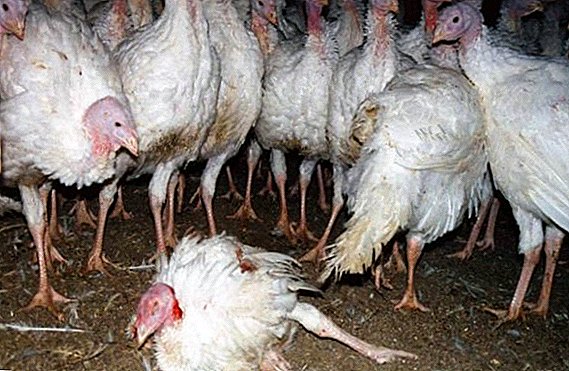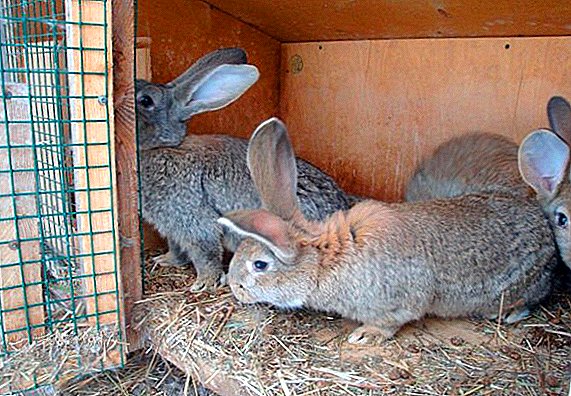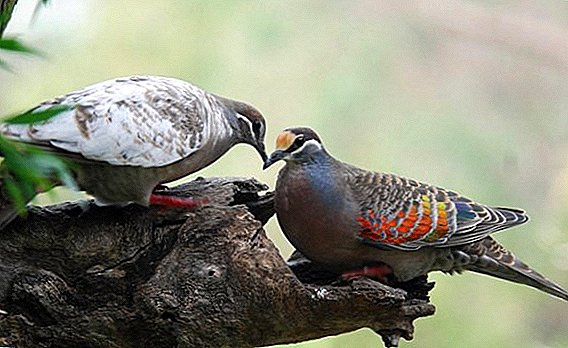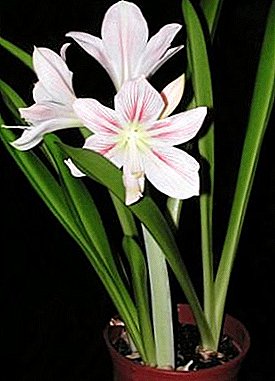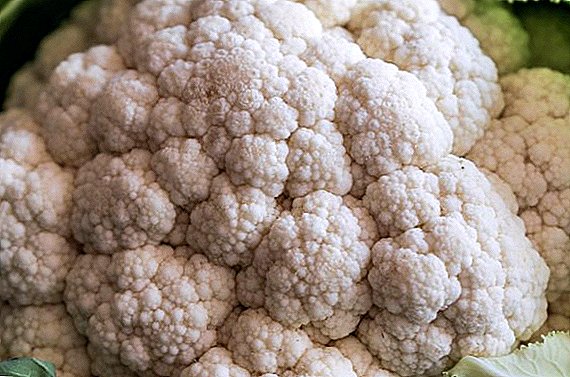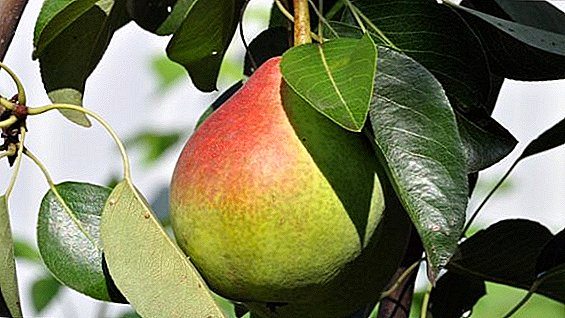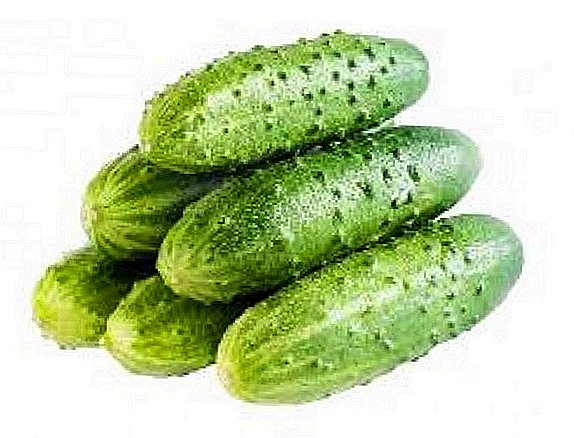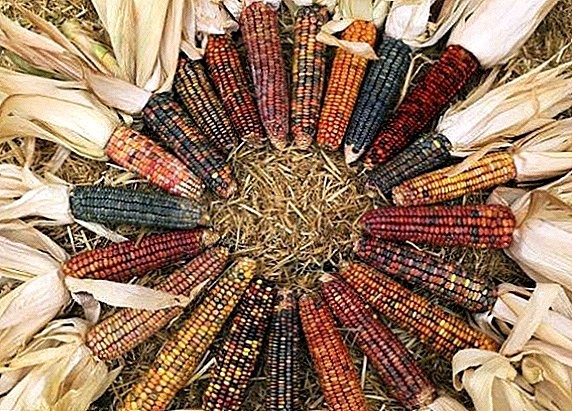 It was not for nothing that corn was called the “queen of the fields” at a certain stage of the long-suffering history of our country. This is indeed a very valuable and useful product, but few people know that over a period of more than five thousand years, mankind has produced a truly inconceivable number of varieties of this grass (more than five hundred in Russia alone!) Differing in taste, color, ripening, application and many other parameters. Consider only a few of the most popular ones.
It was not for nothing that corn was called the “queen of the fields” at a certain stage of the long-suffering history of our country. This is indeed a very valuable and useful product, but few people know that over a period of more than five thousand years, mankind has produced a truly inconceivable number of varieties of this grass (more than five hundred in Russia alone!) Differing in taste, color, ripening, application and many other parameters. Consider only a few of the most popular ones.
Sweet corn
The Latin name is Zea mays saccharata.
Sugar, sweet or, as it is also called, dairy corn is by far the most common type of maize. The grain of this plant is yellow, the color may be more or less saturated, from white to orange. The younger the ear, the brighter its color. Since sweet maize grows almost all over the world and includes a huge variety of varieties and hybrids, it would be wrong to speak strictly about the specific shape of the grains: most often they are somewhat elongated, but they are also almost round, pointed and even curved in the shape of a beak. Grain sizes are approximately 2.2 x 1.7 cm.  The main feature of the form, as the name suggests, is a very high sugar content. Depending on the variety and degree of ripeness, its amount varies between 6-12%.
The main feature of the form, as the name suggests, is a very high sugar content. Depending on the variety and degree of ripeness, its amount varies between 6-12%.
Important! The corn cobs should always be collected before they are fully ripe and at the same time cook as quickly as possible. After the product lays a bit, the sugar in it gradually turns into starch, cob stiffens and becomes much less tasty. There are particularly sweet varieties, which, if they are not instantly cooked, turn into real rubber, they are simply impossible to chew!
In general, this type of crop grows almost in the whole world, where climatic conditions make it possible to grow this heat-loving plant, but the top ten countries with the highest rates in this area include:
- USA.
- People's Republic of China.
- Brazil.
- Argentina.
- Ukraine.
- India.
- Mexico.
- Indonesia.
- South Africa.
- Romania.
 There are three main uses for sweet corn:
There are three main uses for sweet corn:- eating and cooking various fresh dishes;
- preparation in the form of preservation or a freezing;
- processing into flour.
We advise you to familiarize yourself with the features of planting and caring for corn in the garden.
On the variety of varieties of sugar maize, you can write books, in particular, among those varieties that are successfully grown in the middle lane, it would be worth mentioning:
- early hybrids (ripening period - 65-75 days) - "Dobrynya", "Voronezh 80-A", "Early Golden 401", "Sundance" ("sun dance") and "Super Sundance" (F1), "Spirit" (F1 ), Creamy Nectar (F1), Treacle (F1), Trophy (F1), Sheba (F1), Legend (F1), Bloody Butcher, Honey-Ice Nectar;
- middle hybrids (ripening period - 75-90 days) - "Divine Paper 1822", "Merkur" (F1), "Bonus" (F1), "Megaton" (F1), "Challenger" (F1), "Krasnodar", "Krasnodar sugar 250, Don tall, Pioneer, Boston (F1), or Syngenta;
- late hybrids (ripening period - 85-95 days) - "Ice nectar", "Triple sweetness", "Gourmet 121", "Kuban sugar", "Athlete 9906770", "Polaris".
Important! It must be said that of the total volume of corn grown in the world, the share of Zea mays saccharata accounts for just over half a percent, which in absolute figures is less than nine million tons! The main part of crops is allocated for fodder and industrial (for the production of starch, flour, cereals) varieties.
Waxy
The Latin name is Waxy Maize or Zеa mays ceratina.
The color and shape of the grain may be different, yellow, white, red, but if in other varieties of maize with white grains, according to the standard, no more than two percent of other colors are allowed, then the waxy variety is less stringent: the threshold is increased to 3%.
The sign of waxy is recessive, in connection with which such corn can not only be planted next to other varieties, but also to prevent the mixing of grains during harvesting and storage. Initially, this species was formed as a result of a random mutation, when, due to a change in some external conditions, a recessive wx gene appeared in the plant. For the first time such a mutation was recorded in China, but with climate change, it is increasingly occurring in other regions.  In 1908, grains of this species were sent from China to the United States by J. Farnham, a volunteer of the Reformed Church, but did not receive wide distribution: unfortunately, like all natural mutations, waxy maize shows much lower viability compared to other maize species, more often dies and gives smaller yields.
In 1908, grains of this species were sent from China to the United States by J. Farnham, a volunteer of the Reformed Church, but did not receive wide distribution: unfortunately, like all natural mutations, waxy maize shows much lower viability compared to other maize species, more often dies and gives smaller yields.
The main feature of waxy corn is a double layer of tissue surrounding the embryo (endosperm), which makes the grain appear transparent, as if covered with a layer of wax. Inside, this fabric has a powdery structure, which gives the starch of such corn completely unique properties.
Due to problems with breeding, waxy corn is not grown on such a large scale as, for example, dentary. The main area of its industrial production is the People’s Republic of China.
The main purpose of waxy maize is starch production, the composition and qualities of which are the main advantage of this species. Thus, in all types of maize starch consists of amylopectin and amylose in a ratio of about 7: 3, while in Waxy Maize amylopectin is almost 100%. Due to this, this variety gives the most sticky flour. 
Did you know? American scientists from Illinois Hatfield and Bramen conducted a series of experiments on the effect of fodder corn varieties on the development of farm animals and came to surprising conclusions: when replacing conventional maize with waxy, the daily weight gain in lambs and cows improved significantly even at lower costs of feed, while like other animals (including pigs) did not show a particular positive reaction to such a substitution.Interestingly, waxy corn starch is easily distinguished from other types of corn starch by conducting a simple experiment with iodine. The product obtained from Waxy Maize will give the potassium iodide solution a brown tint, while starch from other varieties will turn the solution blue.
The number of varieties of Waxy Maize is quite limited, and the differences between them are not too large. So, among the most popular varieties of this species is called Strawberry, Oakhakanskaya red and Pearl. All of them belong to mid-season varieties, however, Strawberry matures a little earlier than Oakhanskaya and Nacre. Comparative characteristics of the varieties are given in the table.
| Grade name | Ripening period (number of days) | Stem height in meters | Grain color | Cob length, cm |
| "Strawberry" | 80-90 | 1,8 | Dark red | 20-22 |
| "Oakhakanskaya red" | 90 | 2 | bright red | 17-25 |
| "Nacre" | 100 | 2,2 | purple-white | 14 |
It must be said that all three of the above varieties have excellent taste, so that they can be used in boiled form, and not only used to extract the starch.
Tooth-like
The Latin name is Zea mays indentata.  Differs in large grains of usually yellow color, long and flat form. The tissue surrounding the embryo has a different structure in different areas of the surface: in the middle and on the top of the kernel, it is loose and powdery, and hard on the sides. When the grain matures, a characteristic depression appears in its center, resembling a tooth (hence the name).
Differs in large grains of usually yellow color, long and flat form. The tissue surrounding the embryo has a different structure in different areas of the surface: in the middle and on the top of the kernel, it is loose and powdery, and hard on the sides. When the grain matures, a characteristic depression appears in its center, resembling a tooth (hence the name).
A distinctive feature of the species is also a very high yield (especially compared to Waxy Maize) and high survival rates. The plant is tall, strong and very stable. In addition to a large amount of grain, it also provides excellent silage volumes.
Important! Dental corn is considered the most profitable from the economic point of view, a type of maize, so all the countries-producers of this type of grain, listed above, do not ignore Zea mays indentata.The United States remains the world leader in the production of dental maize.
 Zea mays indentata uses are the most extensive:
Zea mays indentata uses are the most extensive:- eating;
- getting starch, flour, grain;
- feed for farm animals;
- alcohol production.
| Grade name | Ripening period (number of days) | Stem height in meters | Grain color | Cob length, cm |
| "Blue Jade" (USA) | 120 | 2,5 | blue-pink with white areas | 15-17 |
| "Indian giant" (India) | 125 | 2,8 | yellow white blue lilac red orange purple black | 35-40 |
| Ruby Pomegranate (Russia) | 90-100 | 2,5 | Dark red | 37-30 |
| Syngenta (Austria) | 64-76 | 1,8 | yellow | 21 |

Siliceous (Indian)
The Latin name is Zea Mays indurate. The grain shape is round, the tip is convex, the structure is glossy and smooth. Color may be different. The endosperm over the entire surface, except for the center, is solid, in the middle is powdery and friable.
To clean the corn grain will help the device called kruporushka, which can be made by hand.
A special feature of this variety is its very high starch content, but here it is in solid form. Like the dental varieties, Zea Mays indurate is very productive and enduring, but compared to the previous category, siliceous corn matures much faster. A distinctive feature of Indian varieties is the absence of a characteristic depression at the top of the grain.
Zea Mays indurate is grown all over the world, but the main producer is the United States of America, and this variety is cultivated mainly in the northern part of the country.
Did you know? It is said that the first corn that came to Europe belonged to the type of Zea Mays indurate. And she received the name "Indian" because Columbus brought it from America, which, as we know, the great traveler mistaken for India.
 The main field of application of siliceous corn is the production of grain (cereals, flakes, etc.). However, in the immature form, it has excellent taste and is quite sweet.
The main field of application of siliceous corn is the production of grain (cereals, flakes, etc.). However, in the immature form, it has excellent taste and is quite sweet.It is worth paying attention to these varieties of Indian maize:
| Grade name | Ripening period (number of days) | Stem height in meters | Grain color | Cob length, cm |
| "Cherokee Blue" (North America) | 85 | 1,8 | lilac chocolate | 18 |
| "Mays Ornamental" Congo (South America) | 130 | 2,5 | varied stains with variegated patches | 22 |
| "Flint 200 SV" (Ukraine) | 100 | 2,7 | yellow | 24 |
Starchy (mealy, soft)
The Latin name is Zea Mays Amylacea. The grain shape is round, strongly flat, the tip is convex, the surface is smooth but not shiny. The head itself is thin, but the grains are large. Color is white or yellow.
Check out the best varieties of corn.
A feature of this variety is the high (up to 80%) content of soft starch, enveloping embryo tissue, powdery across the surface, soft. Squirrel in this corn a little. Ripens, as a rule, late, but it reaches a high growth and gains a rich green mass.  It is grown in the states of South America, as well as in the south of the USA, almost never occurs outside of America. The main field of application is flour production. (thanks to soft starch, this type of maize is very easy to industrial processing). In addition, molasses and flour are made from mealy corn, and also used for the production of alcohol. In the boiled form is also very tasty.
It is grown in the states of South America, as well as in the south of the USA, almost never occurs outside of America. The main field of application is flour production. (thanks to soft starch, this type of maize is very easy to industrial processing). In addition, molasses and flour are made from mealy corn, and also used for the production of alcohol. In the boiled form is also very tasty.
| Grade name | Gestation period | Stem height in meters | Grain color | Cob length, cm |
| "Mays Concho" (North America) | early | 2 | bright yellow | 20-35 |
| "Thompson Prolific" (North America) | late | 3 | white | 41-44 |
Bursting
The Latin name is Zea mays everta.  The shape of the head of the Zea mays everta is of two types: rice and pearl barley. The first species is distinguished by the pointed end of the cob, in the second it is rounded. The color can be different - yellow, white, red, dark blue and even striped.
The shape of the head of the Zea mays everta is of two types: rice and pearl barley. The first species is distinguished by the pointed end of the cob, in the second it is rounded. The color can be different - yellow, white, red, dark blue and even striped.
Find out which corn varieties are best for making popcorn.
A distinctive feature of the type is a high protein content and grain structure. The fabric surrounding the embryo is as hard as glass and very thick, only in the immediate vicinity of the embryo there is a loose layer. It is this grain structure that causes it to burst in a characteristic manner when heated, breaking off the peel under the pressure of water evaporating inside the fruit.  As a result of the “explosion”, the endosperm is turned inside out, turning the grain into a white lump of powdery structure, several times larger in size than the usual corn kernel. Heads of bursting corn are usually smaller than those of other types of maize, and the grains themselves are also much smaller.
As a result of the “explosion”, the endosperm is turned inside out, turning the grain into a white lump of powdery structure, several times larger in size than the usual corn kernel. Heads of bursting corn are usually smaller than those of other types of maize, and the grains themselves are also much smaller.
On an industrial scale, Zea mays everta is produced in the United States, but lately other states have begun to pay attention to this species due to the growing popularity of popcorn.
The main purpose of this type of corn - of course, the production of air flakes. However, from these varieties it is possible to produce flour or cereals.
Among the most popular varieties of Zea mays everta it is worth mentioning such: "Miracle Cone" (yellow and red, the first belongs to the rice variety, the second - to barley), "Mini Striped", "Red Arrow", "Volcano", "Lopai-Lopai "," Zeya. " Their main characteristics are listed below. 
| Grade name | Ripening period (number of days) | Stem height in meters | Grain color | Cob length, cm |
| Miracle Cones yellow (China) | 80 | 1 | yellow with white patches | 10 |
| Miracle Red Bump (China) | 80 | 1 | Dark red | 12 |
| Mini Striped (China) | 80 | 1,7 | red and white striped | 11 |
| Red Arrow (China) | 80 | 1,5 | red black | 13 |
| Volcano | 80 | 2 | yellow | 22 |
| Pop-Pop | 90 | 1,7 | yellow | 21 |
| Zeya (Peru) | 75 | 1,8 | red black | 20 |
Filmy
The Latin name is Zea mays tunicata.
Perhaps this is the most rare type of corn. In the color and shape of the grain, it differs little from the cobs familiar to our eyes, but its characteristic feature is the presence of a specific scale that covers the grain. Breeders show that mating is manifested in the phenotype of gene tu.
Did you know? South America is probably the birthplace of filmy corn, in any case, its first samples were discovered in Paraguay at the beginning of the nineteenth century. There is a version that the ancient Incas used this plant in their religious rites.
 It is impossible to eat Zea mays tunicata, due to the nature of the structure, for this reason this type of corn is not produced on an industrial scale. In addition to South America, the plant is found in Africa and is mainly used as pet food. Due to the obvious uselessness of breeding work in relation to this type of maize is not conducted, therefore, on individual varieties can not speak.
It is impossible to eat Zea mays tunicata, due to the nature of the structure, for this reason this type of corn is not produced on an industrial scale. In addition to South America, the plant is found in Africa and is mainly used as pet food. Due to the obvious uselessness of breeding work in relation to this type of maize is not conducted, therefore, on individual varieties can not speak.
Find out when corn is harvested for grain and silage and how to properly store corn without loss.
So, the concept of "corn" is much wider and more diverse than the yellow sweet cob, lovingly boiled at home or bought on the Black Sea beach in August. This cereal is used to make starch and flour, oil is crushed out of it, alcohol is made and even biogas (not to mention popcorn), they are fed poultry and other farm animals, including cattle - and for each of these purposes there are own specially bred varieties.


